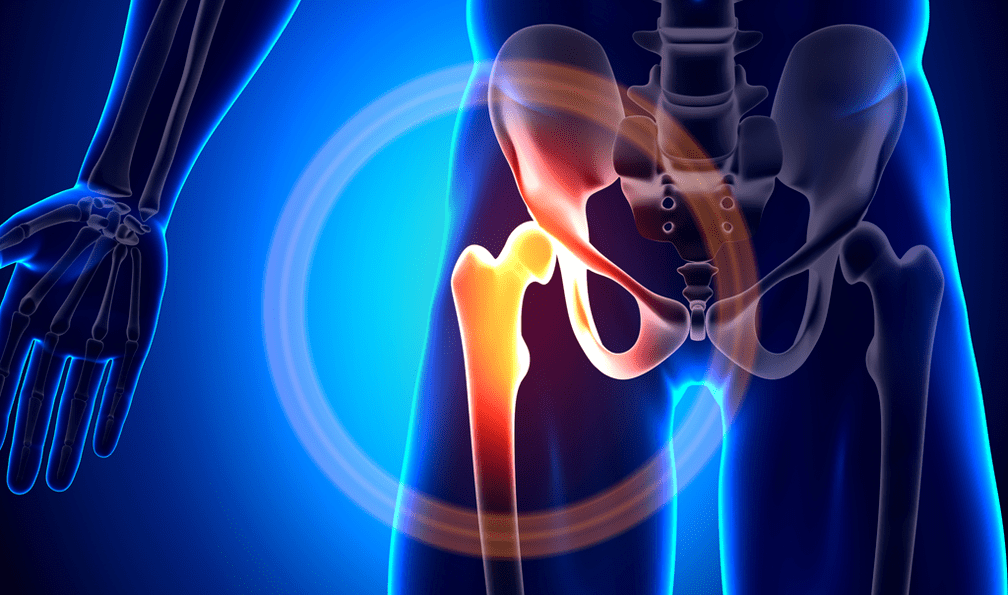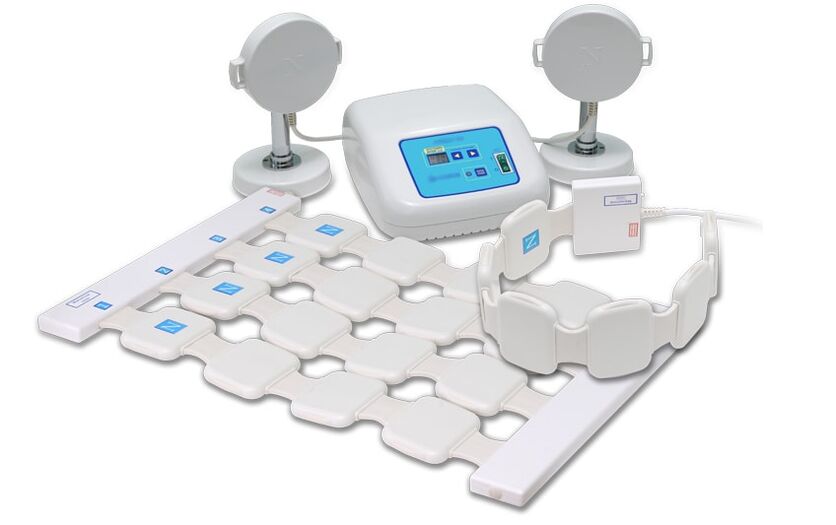What is this disease with such an intricate name - coxarthrosis? This disease is deforming osteoarthritis of the hip joint and is often also called osteoarthritis of the hip joint.
Currently, coxarthrosis is the leader among diseases of the musculoskeletal system, which are degenerative-dystrophic in nature. There are many reasons that contribute to the onset of coxarthrosis, and in connection with this, this disease has spread to all age groups.

Coxarthrosis refers to osteoarthritis that is not inflammatory in nature, in which degenerative-dystrophic changes occur at first in the cartilage of the hip joint, which lines the surfaces of the joint bones, and in later stages occur already bone changes directly. In the course of such a gradual course of the disease with coxarthrosis, therefore, there is a violation of the naturally normal functions of the affected hip joint, which ultimately leads to a violation of the functions of the musculoskeletal system of the patient as a whole .
For the most part, osteoarthritis of the hip joint affects people over the age of forty. Of course, coxarthrosis, like other diseases, can be successfully treated without surgery, but only in its early stages. But in its later stages, it will hardly be possible to do without surgery and only one thing can help to avoid disability: prosthetics of the joint affected by coxarthrosis. Unfortunately, people with coxarthrosis, not attaching importance to small pains in the hip joint in the initial stage of the disease, avoid going to the doctor, and osteoarthritis of the hip joint, meanwhile, continues to progress day by day , gradually transforming into a more advanced form.
How does coxarthrosis develop?
Let's look at the mechanism of development of the disease coxarthrosis. And let's start with the fact that the hip joint consists of two bones:
- the end of the femur itself, similar to a ball;
- acetabulum, similar to a small billiard pocket, located in the iliac part of the pelvis;
- special articular cartilage on the surface of both bones, similar to a spongy substance and necessary as a shock absorber, which compresses during movement and straightens in its absence;
- as well as the ligaments that form the cavity of the hip joint itself and thus form the joint capsule.
Furthermore, around the joint there is muscle tissue, such as the femoral, buttock and other muscles, on whose functionality the condition of the hip joint also depends.
In the course of movement, when the articular cartilage is compressed, a specific liquid is "squeezed" into the joint, which is a kind of lubricant for the bones that articulate in the joint. Furthermore, the articular cartilage itself also performs the function of uniformly distributing the loads on the surface of the joint, being an excellent shock absorber during movements.
The very onset of the disease with coxarthrosis is mainly due to the fact that the nutrition of the cartilage of the hip joint is disturbed. The cartilage becomes thinner and subsequently disappears in some places. If measures are not taken to stop this process, in the places where cartilage atrophy described above occurs, the bone itself will grow directly, thereby trying to "fill" the resulting void in the joint cavity. As a result of such bone changes, therefore, osteophytes, ie "spikes" on the bone, begin to appear. These deformities, in turn, lead to a violation of the congruence of the bones articulating in the hip joint and the subsequent "abrasion" of the remaining healthy areas of the articular cartilage.
Causes of osteoarthritis of the hip joint
The causes of coxarthrosis, for which it occurs, can be divided into primary, of unclear etiology, and secondary, following other diseases, for example:
- hip dislocation, which is congenital;
- hip dysplasia;
- aseptic necrosis of the femoral head itself;
- previously suffered various injuries, such as a fracture of the femoral neck;
- Perthes disease;
- inflammatory processes in the hip joint;
Since the disease of coxarthrosis occurs not only in one, but at the same time in both hip joints, it is quite possible to say that bilateral coxarthrosis is not uncommon. Although with primary coxarthrosis, often usually, the knee joint or spine is also affected.
Coxarthrosis Symptoms
The very first symptoms of coxarthrosis directly depend on the degree of damage to the hip joint, as well as on the stage of development of this disease, and the main ones are:
- pain that occurs during movement, in the hip joint, and disappears at rest;
- emerging lameness;
- stiffness that has appeared in the hip joint;
- downward progress in the hip range of motion;
- weakness of the femoral muscles and a noticeable decrease in their volume.
Separately, we consider the symptoms of coxarthrosis, depending on the degree of the disease with this disease:
- Symptoms of the 1st degree of coxarthrosis: in the hip joint there are pains of a moderate nature, and only after the joint has been subjected to an intense load for a long time. After removing the load and rest, this syndrome is completely stopped. With the first degree of coxarthrosis symptoms, the gait remains normal and the range of motion of the joint does not change.
- Symptoms of the 2nd degree of coxarthrosis: the pain in the hip joint is already more intense than in the first degree, but more projected into the groin region. In view of developing muscle atrophy, the knee also starts to ache, and very often more so than the ilio-femoral joint itself. Sometimes, with symptoms of second degree coxarthrosis, pain begins to appear even at rest, and after the load transferred to the affected joint, a rather long rest is already required for its relief. Lameness begins to appear when running or walking for a long time. At the same time, the strength of the thigh muscles is quite small, and the range of motion of the joint is also underestimated.
- Symptoms of the 3rd degree of coxarthrosis: persistent pain in the hip joint, which does not go away even after an extremely long rest or constant rest, even at night. The pain has already affected the entire leg. Against the background of pain, the patient develops insomnia and various sleep disorders. There is a strong atrophy of the muscles of the thigh, buttocks and lower leg, while the motor volume of the joint is almost minimal. When walking, a patient is forced to resort to aids, such as a cane, to be able to move.
If such arthrosis of the hip joint develops only in the hip joint of one leg, its weakened femoral muscles give impetus to the development of a lateral displacement of the pelvis, as a result of which the length of the leg with the joint affected by coxarthrosis decreases.
Coxarthrosis Diagnosis
When diagnosing coxarthrosis, the symptoms of coxarthrosis described above are necessarily taken into account in combination with the data obtained from an X-ray examination of the patient. This technique provides the opportunity to determine not only the degree of coxarthrosis, but also to identify the causes that served as a catalyst for the development of coxarthrosis. Radiography provides an excellent opportunity to determine the changes that specifically caused the injury of the hip joint, which is directly related to the developmental mechanism of coxarthrosis.
In addition to the already listed diagnostic methods, computed tomography and magnetic resonance imaging methods can also be used, providing the opportunity for a thorough and detailed study of the developing pathology, such as, for example, the structure of bone tissue, the deformation of which is a companion of this disease. As far as magnetic resonance is concerned, this method still allows an evaluation of the pathological disorders that the soft tissues surrounding the joint affected by coxarthrosis have undergone.
Treatment of coxarthrosis disease
The choice of treatment for coxarthrosis directly depends on the symptoms of coxarthrosis and its stage. Usually, with the first and second degree of coxarthrosis, traditional conservative drug therapy is carried out, consisting in the intake of chondroprotectors, vasodilators and, if indicated, also muscle relaxants. During the time period when coxarthrosis is particularly acute, non-steroidal anti-inflammatory drugs are also used. It should be borne in mind that such treatment should be carried out by a specialist doctor, since self-medication, unlike traditional medicine, can have an extremely negative effect on the patient's internal organs and completely suppress the ability to restore hyaline cartilage.

Also, in case of coxarthrosis, various physiotherapeutic procedures and physical therapy are prescribed. Particularly effective, in combination with the traditional drug treatment of coxarthrosis, is the use of magnetotherapy in the treatment of osteoarthritis using a special device.
The impact on the body of a patient with coxarthrosis with a diet does not have a direct therapeutic effect, but obese people are recommended to reduce body weight, as it allows to reduce the load on the affected joint, thereby relieving acute symptoms of coxarthrosis .
As for the third degree of the disease with coxarthrosis, the symptoms of which are the most painful, the treatment, as such, is performed only through surgery, for example, hip arthroplasty. Statistical data indicate that after surgery, in 95% of cases, absolute restoration of the functions of a limb with deforming arthrosis of the hip joint is achieved, which subsequently allows you to lead a fairly active lifestyle.
The useful life of such a prosthesis is approximately 15-20 years, but at the end of its useful life a second operation is required to replace the worn endoprosthesis.
Note,it's important! Don't diagnose yourself!If symptoms of coxarthrosis appear, it is necessary to consult an orthopedic doctor, since only a qualified specialist can make a correct diagnosis and prescribe the most optimal treatment.
Prevention of coxarthrosis disease
Diseases of coxarthrosis can be avoided if the necessary prevention of coxarthrosis is performed:
- mandatory and timely treatment of inflammatory joint diseases;
- timely treatment of joint dysplasia;
- correct and reasonable compulsory physical activity, especially weight training, which must be done correctly;
- mandatory control of your body weight, keeping it within the norm;
- joint injury prevention.
































